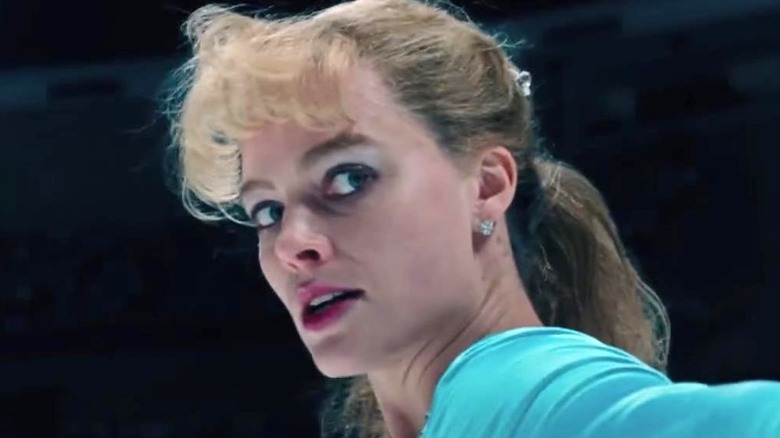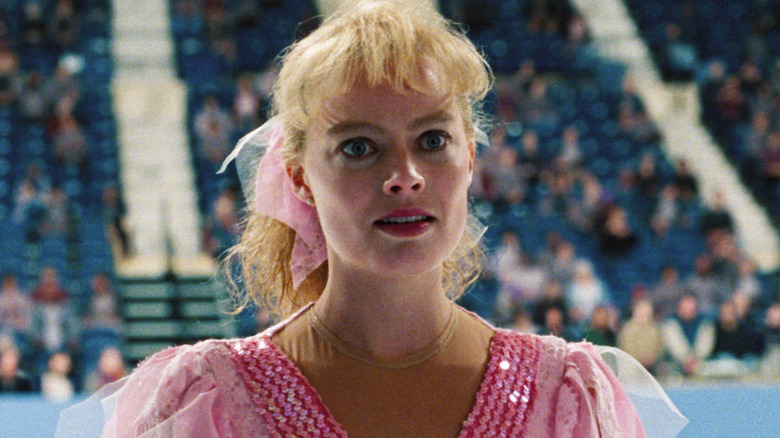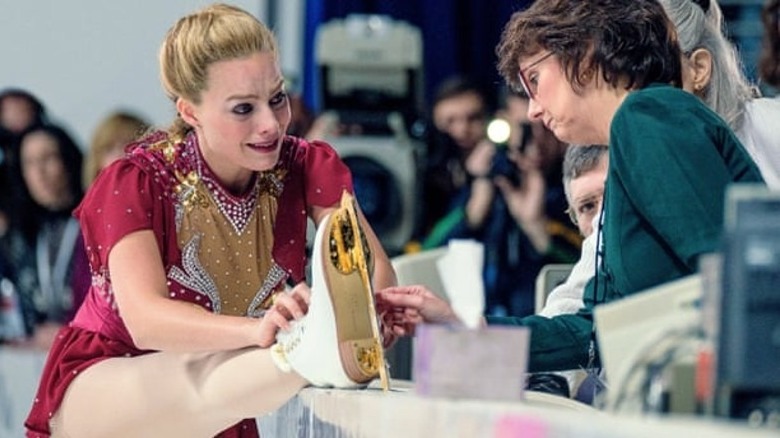How Accurate Is I, Tonya?
"I, Tonya" is a 2017 biopic about world famous former figure skater Tonya Harding. The film stars Margot Robbie as Harding and details her life from her childhood, to her journey as a figure skater ... and, yes, a certain notorious incident. Harding started skating at a young age, and the film shows how Harding's mother put her in figure skating practice at the age of four. Her rise in the skating world was long and rigorous, but she eventually rose to greater status, placing high in championships and skating at the Olympics.
Harding has become known as somewhat of a controversial figure, though, because of her speculated involvement in a 1994 orchestrated attack on rival Olympian Nancy Kerrigan. According to Biography, on January 6, 1994, Kerrigan was struck in the leg, just below the knee, by a telescopic baton. The attack was in an attempt to keep her from competing in the national championship for figure skating, ensuring she would not compete in the Winter Olympics. The assailant was revealed to be hired by Harding's ex-husband, Jeff Gillooly, and bodyguard, Shawn Eckardt. Harding initially claimed to have played no part in the initial attack, however her involvement became a topic of debate amongst the public.
When creating films like this that depict not only a person's life and image, but also a controversial moment in pop culture, there is always going to be a magnifying glass examining the accuracy to the real story. So, just how accurate is "I, Tonya," exactly?
I, Tonya's facts are pretty accurate
"I, Tonya" is, for the most part, accurate to real events, with only a few minor changes or unclear answers. Fact-checking articles, such as the one published by Vulture, have established that the movie has more verified truths than fabrications, albeit with little scenes coming back as unverified or possibly being changed.
Even some of the smaller details in "I, Tonya" have been confirmed to be true, though, by eye-witness accounts — such as Harding's mother hitting her with a hairbrush (per The New York Times). Other details, such as Shawn Eckardt claiming to be an expert on counterterrorism in an interview with Diane Sawyer, and a death threat being called in on Harding (via The New York Times), were also true. However, not everything confirmed to be true happened on screen quite the way they happened in the real world. There are some slight altercations, presumably to make the film more interesting, such as the aforementioned death threat: the death threat really did occur with someone threatening Harding that she will get "a bullet in the back" if she skates that day. In the film, it is revealed that Eckardt made the call as a part of the assault plan, however in reality, the caller's identity is unknown.
There is one big aspect of "I, Tonya" that is less based in fact, as told by Bustle, and that's the portrayal of Harding's mother, LaVona Golden. When researching for the film, screenwriter Steven Rogers was unable to find Golden: Allison Janney, who played Golden, had only one interview of Golden to base the role, "We didn't know at the time if she was alive or dead, so it was pretty much Tonya's experience of her mother and artistic license," Janney said in an interview with Deadline.
Side-by-side comparisons in I,Tonya are almost identical
When doing some side-by-side comparisons of the film's scenes next to real-life videos of Harding, the film — in this regard — is extremely dead-on. There is a YouTube video available, posted by a user named dimitreze, that actually places scenes from the film next to the real-life event being depicted, and it's astonishing to see just how accurate "I, Tonya" portrayed most of its scenes, especially when Robbie was recreating Harding's figure skating routines. Robbie basically nailed the performances, and the wardrobe team was also able to perfectly remake Harding's figure skating costumes.
One of the more notable changes when looking at side-by-side comparisons, though, is the actors' line delivery in comparison to how their real life counterparts said the given lines. For example, in the film's depiction of Eckardt's interview with Diane Sawyer, Paul Walker Hauser's delivery of his lines as Eckardt are on the comedic side, and he delivers sentences at a normal speed. In the real Diane Sawyer interview, however, Eckardt speaks slowly and the whole atmosphere is much more drab. The same can be said about many of the film's interview scenes which is not a reflection of the film's truthfulness, but most likely more of a stylistic choice since the film carries a comedic tone.
"I, Tonya" manages to be pretty accurate to the story of Harding, and only deviates every now and then. Still, even the changes echo what Harding thinks of the truth in general, which is said in the film, "There's no such thing as the truth. Everyone has their own truth."


